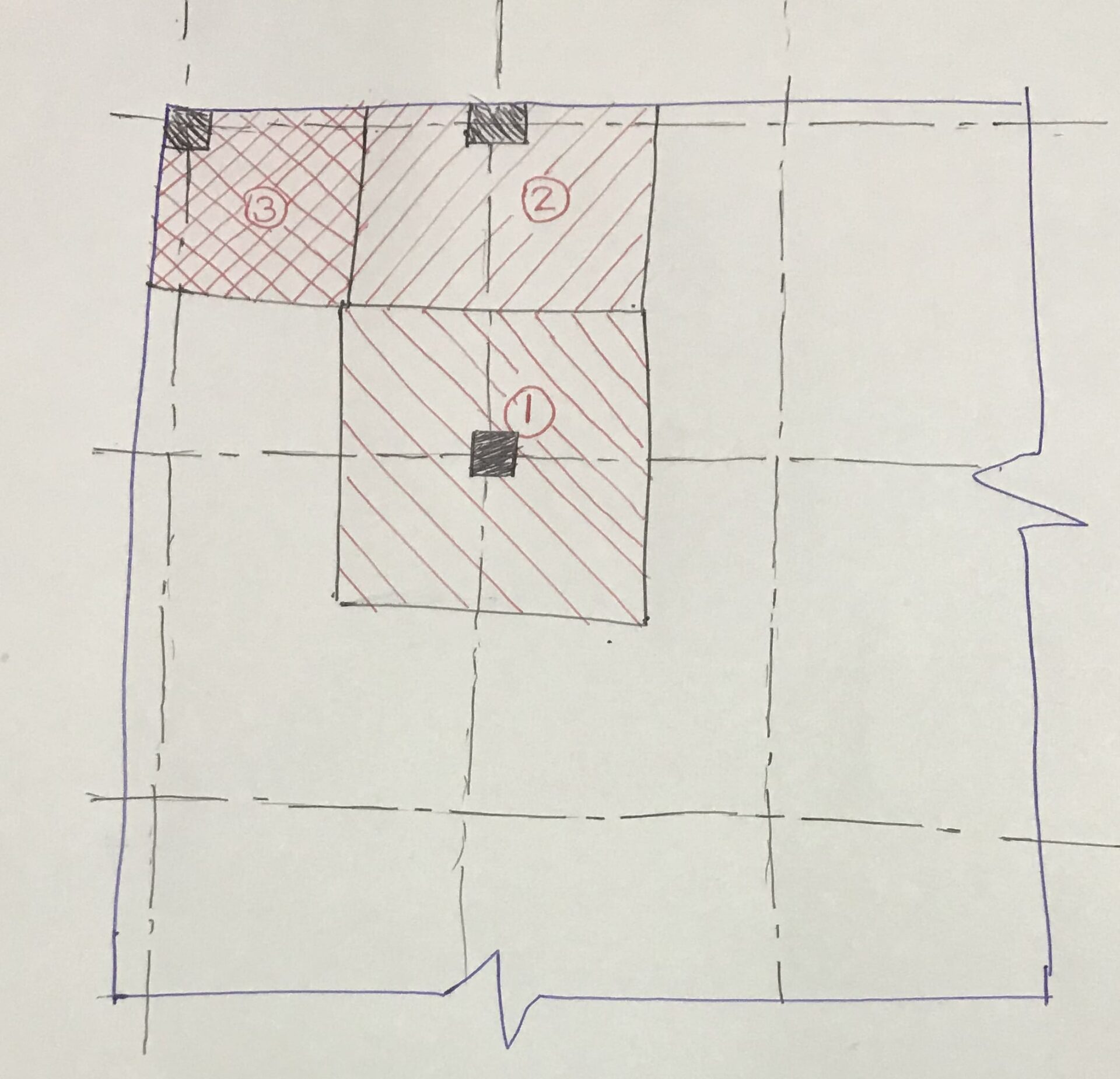Knowing the methods of calculating the tributary area for columns is important when we calculate the axial loads on the column. In manual calculations, the key factor of calculating the column loads is the tributary area.
When we calculate the loads on the vertical element we consider the tributary area method for columns but it is not limited only to the columns. Axial loads on the concrete walls are also calculated from this method.
The Tributary area method is the approximation method and also it is an accurate method.
Most of the time, we prepare a computer model for structural analysis. It is required to check whether the outputs of the models are correct.
The validation of the computer models is also done by the loads calculated by manually using the tributary area method.

Depending position of the columns, the area to be considered in the calculation varies.
The above figure indicates three tributary areas for columns.
- Area – 1 : A center column having one-fourth of the area from four panels around the column.
- Area – 2 : A edge columns having one-fourth of the area from two panels around the column.
- Area – 3 : A corner column having one-fourth of the area from one panel around the column.
Depending on the area of the column, we calculate the axial load on the column.
When there are area loads, we can use this method directly. However, when there is a line load on the slabs, we can not use it directly.
For example, when there is a wall on the slab and it is located on the part of the one-fourth of one panel. In such situations, we consider the distance ratios.
Depending on the distance to the wall, the axial load on the column is calculated. If the wall is not located in the one-fouth of the area to be considered for the column the wall load will not be count for that particular column if we use the tributary area method. The load calculation will be incorrect.
Therefore, we have to deviate from the tributary area method for these kinds of calculations. In such situations, distance to the wall is considered and loads on surrounding columns are calculated based on the relative distances.
The column loads could have some deviation from the computer analysis model due to the not consideration of the stiffness of the structural elements. In the finite element method, the stiffness of the structural elements depends on the distribution of loads.
Further, the deviation of the loads could be expected for irregular structures.


